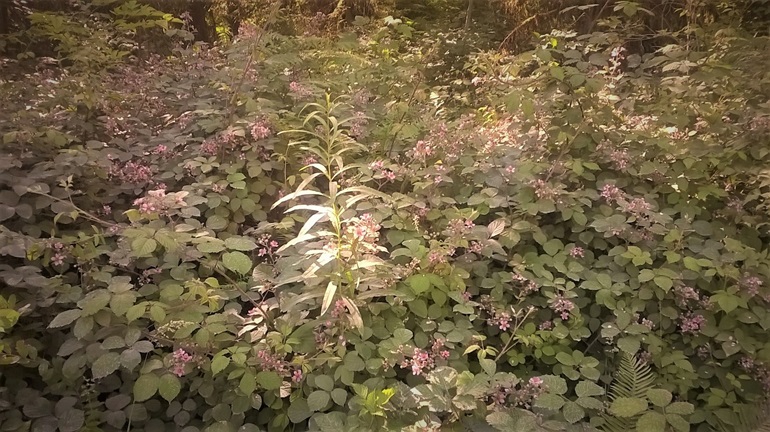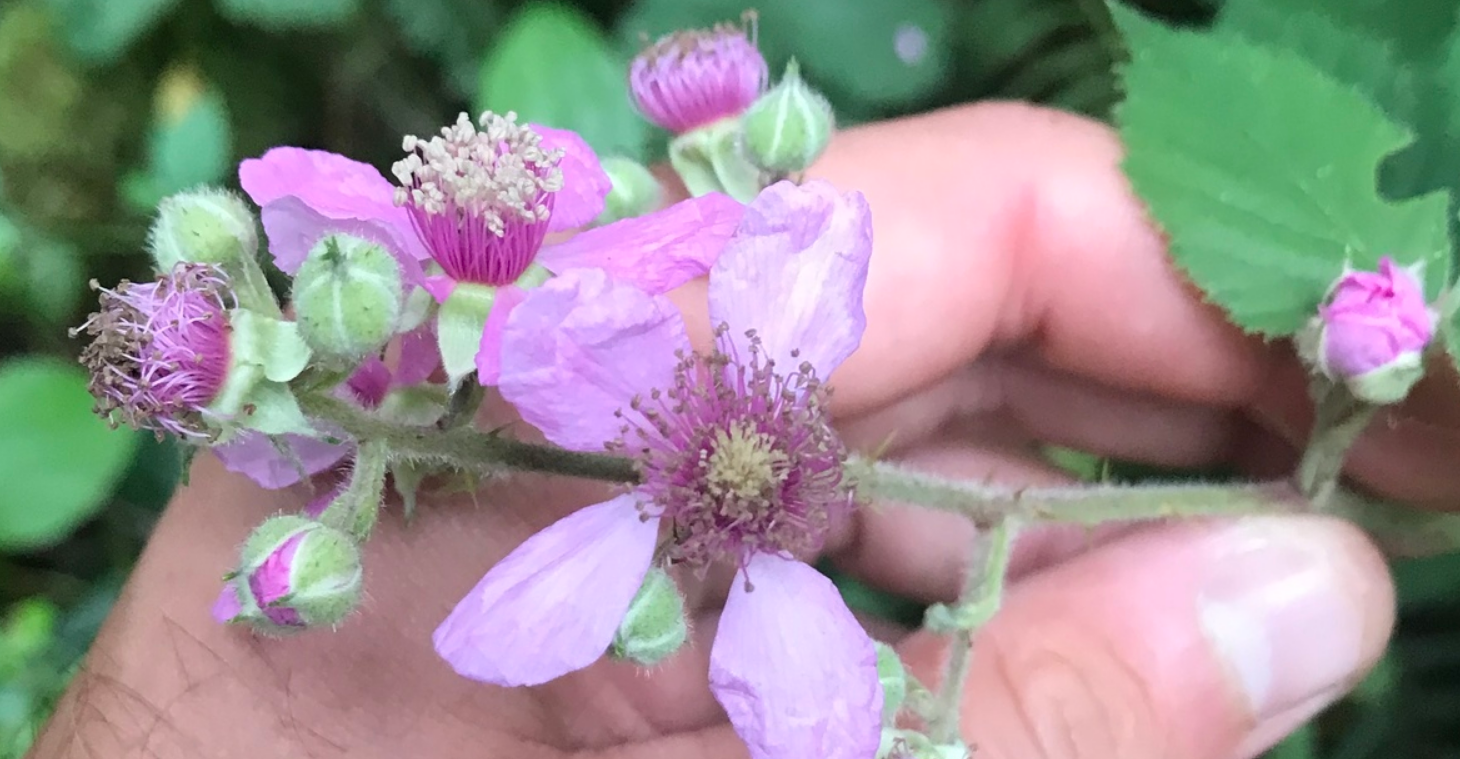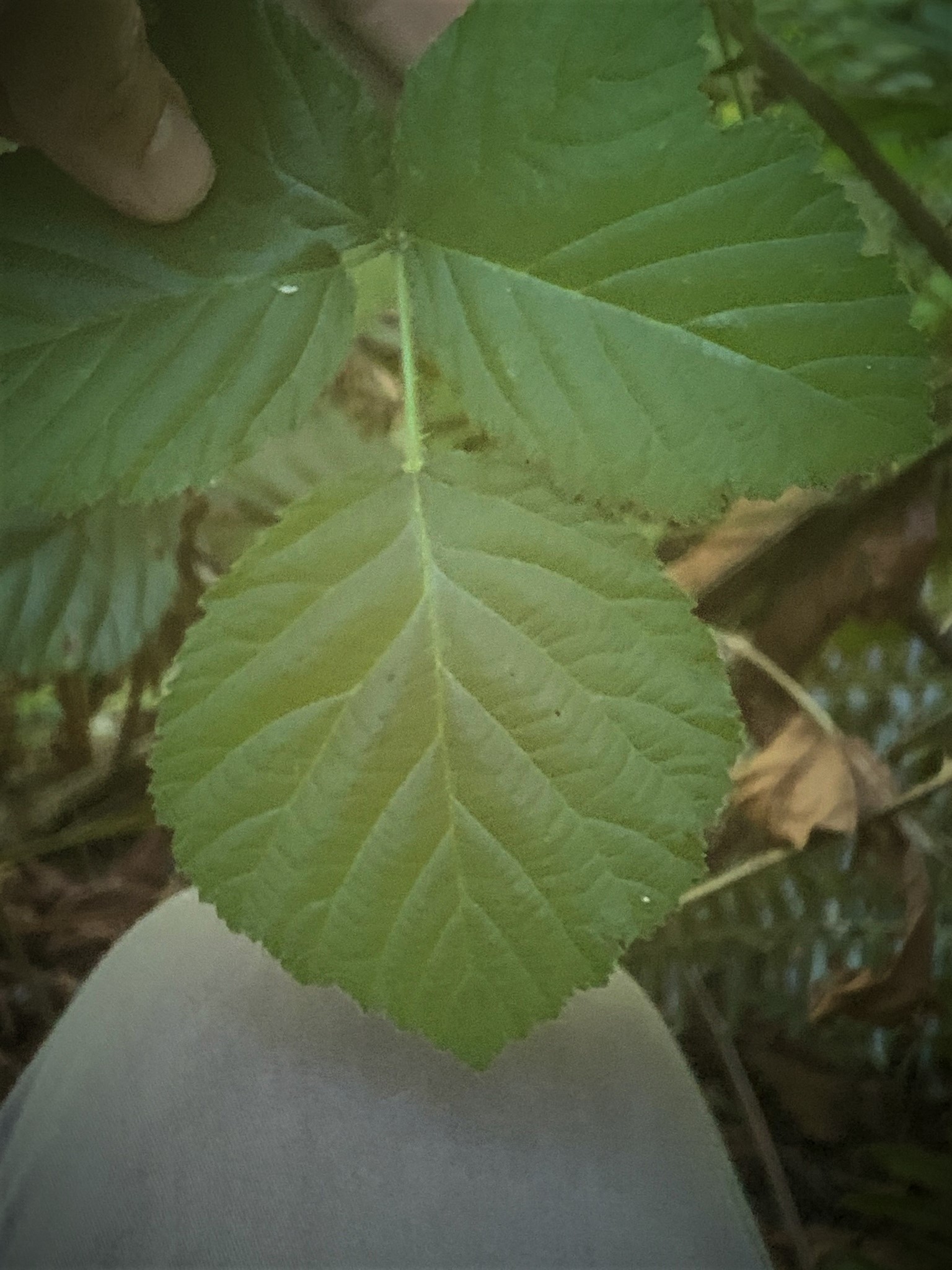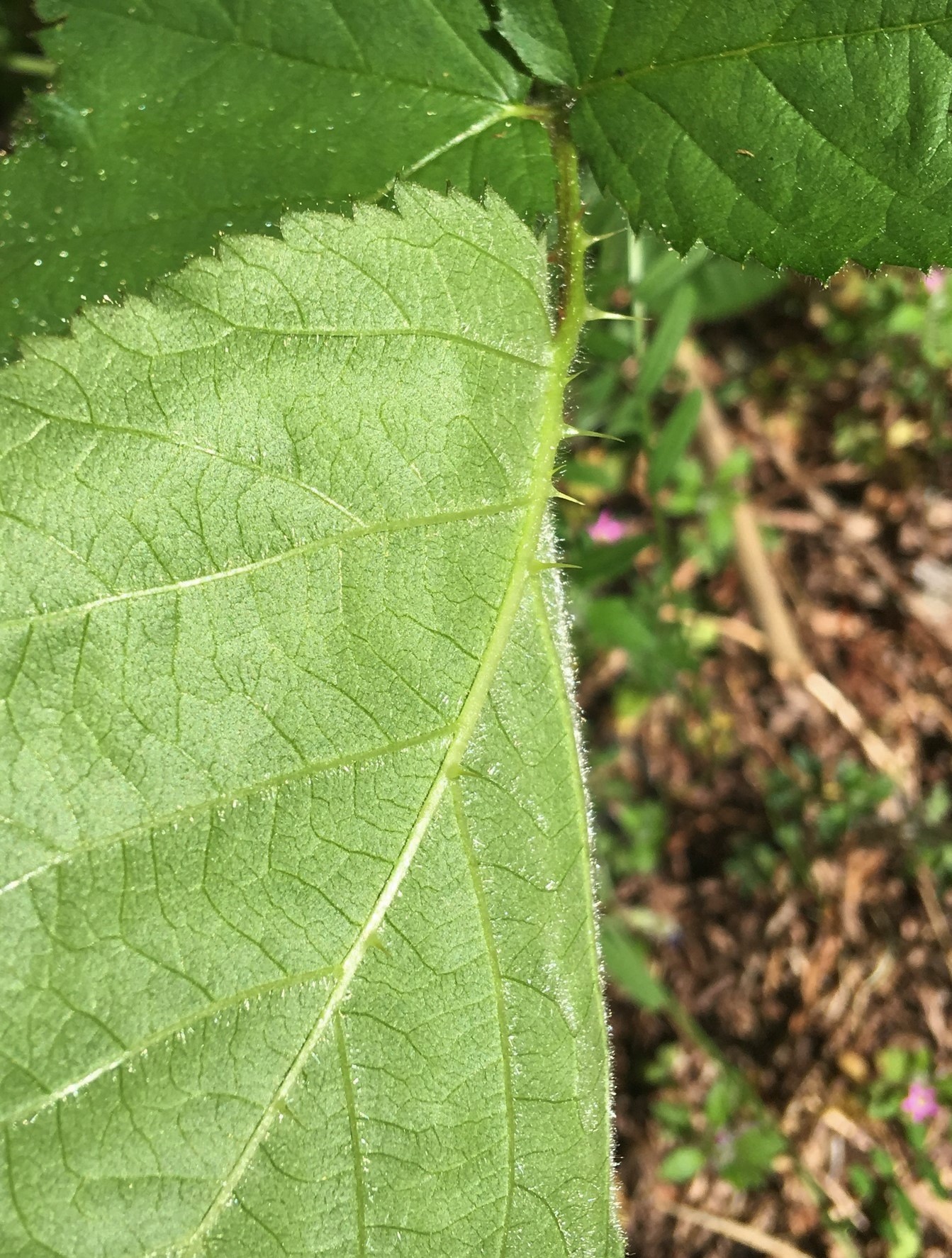Vested blackberry identification and control
Information about the weed vested blackberry. Vested blackberry is also known by its Latin name, Rubus vestitus.
About this weed
Vested blackberry is a weed of concern in King County. This means control is not required but always recommended. This recommendation is due to its limited distribution in King County, potential to increase introduced blackberry impacts, and difficulty to control.
Vested blackberry is known as Rubus vestitus and it is in the rose family. It is also known by the common name European blackberry and sometimes by the Latin name Rubus fruticosus.

Why it's a problem
Vested blackberry is spread by birds, animals, and disturbance and can tolerate a range of conditions that can resist other problematic blackberries. With a preference for dry conditions (alkaline soil) and tolerant of shade, vested blackberry has the potential to expand the footprint of invasive blackberry impacts in King County.
Plant description
Vested blackberry has been introduced along the coast in Oregon, Washington and British Columbia and is also found in New Zealand.
Vested blackberry usually has purple or pink flowers. It has a low (up to 6 feet) creeping or shrubby habit while growing densely in open to mostly shady understory. Its key identifying feature is the main stem, which is covered in felty hairs with straight and slender thorns. These main stems are more round than other local noxious blackberries and can vary in reddishness. The stems can appear dark-red to reddish-green in shadier places. Its leaves are densely hairy underneath. The sepals under the petals can have tiny pricklets and a similar fuzziness as the underside of leaves.



What to do if you find it
Because vested blackberry is already naturalized in several places in King County and is not on the State Noxious Weed List, we are not tracking locations. However, if you know of any heavily infested forests, especially outside of the urban growth area, please report it. Property owners are not required to control it, but it is strongly encouraged. If you would like information or advice on how to control this plant, please continue reading below or feel free to contact our office. If you are concerned about where the plant is growing on public lands or trails, we can direct you to the agency responsible for that area.
Control methods
While small populations of vested blackberry, seedlings and very small plants may be controlled by hand, it has been found that vested blackberry root fragments stay in the ground and sprout more easily from smaller root fragments than other nonnative blackberries, so care should be taken to remove all the roots.
Other methods include mowing and/or livestock grazing (especially goats). Removal of top growth by mowing, cutting, or grazing with goats can eventually exhaust blackberry if done regularly (Spring and Fall) and over several years.
For patches that are too large to dig up or mow, the most effective method is to apply herbicide. Apply herbicide directly to the foliage or live wood area of the canes of actively growing plants. Use the foliar or cut stump methods with an herbicide such as triclopyr, imazapyr, or glyphosate. Application of herbicides in late summer to fall (when native plants are dormant) will reduce off-target damage and improve control versus application in the spring. Always read the label first.
Disposal instructions
Vested blackberry roots and shoot tips may continue to grow if they contact the ground. Pile blackberry canes and roots on tarps, downed logs, brush piles, or other elevated surfaces so stems will dry out.
If creating piles on-site is not an option, dispose of blackberry roots in yard waste bins or take to a transfer station. Home compost systems may not create high enough temperatures required to kill the seeds within the berries.

 Translate
Translate